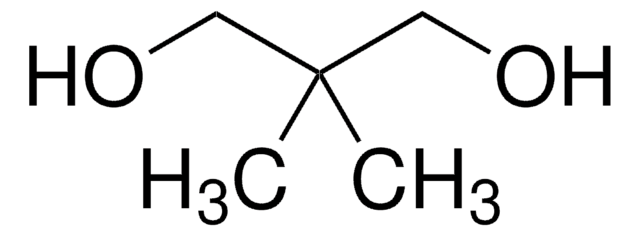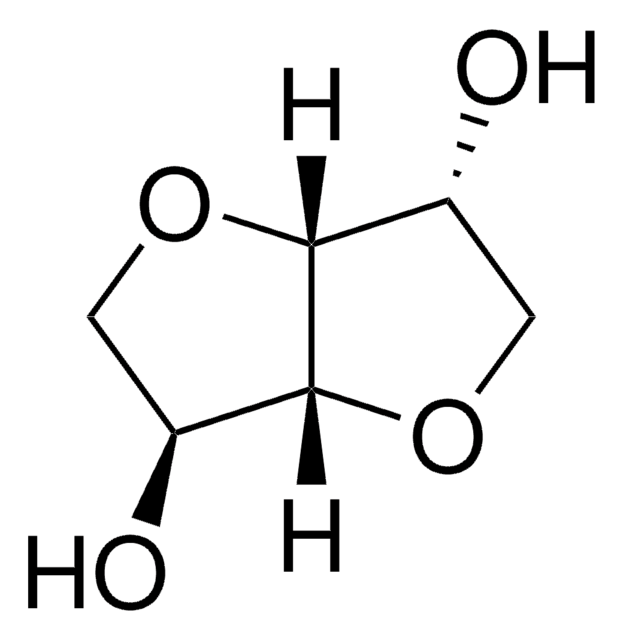125598
1,4-Cyclohexanedimethanol
mixture of cis and trans, 99%
Synonym(s):
1,4-Bis(hydroxymethyl)cyclohexane, mixture of cis and trans
Sign Into View Organizational & Contract Pricing
All Photos(4)
About This Item
Linear Formula:
C6H10(CH2OH)2
CAS Number:
Molecular Weight:
144.21
Beilstein:
1902271
EC Number:
MDL number:
UNSPSC Code:
12352100
PubChem Substance ID:
NACRES:
NA.22
Recommended Products
vapor density
5 (vs air)
Quality Level
Assay
99%
autoignition temp.
584 °F
bp
283 °C (lit.)
functional group
hydroxyl
SMILES string
OCC1CCC(CO)CC1
InChI
1S/C8H16O2/c9-5-7-1-2-8(6-10)4-3-7/h7-10H,1-6H2
InChI key
YIMQCDZDWXUDCA-UHFFFAOYSA-N
Related Categories
General description
1,4-Cyclohexanedimethano is extensively used as cross-linking reagent in polymer industry.
Application
1,4-Cyclohexanedimethanol has been used in the synthesis of polyketal copolymers. It was used as diol comonomer during the synthesis of polyester-carbonates based on 1,3-propylene-co-1,4-cyclohexanedimethylene succinate.
Signal Word
Danger
Hazard Statements
Precautionary Statements
Hazard Classifications
Eye Dam. 1
Storage Class Code
11 - Combustible Solids
WGK
WGK 1
Flash Point(F)
321.8 °F - closed cup
Flash Point(C)
161 °C - closed cup
Personal Protective Equipment
dust mask type N95 (US), Eyeshields, Gloves
Choose from one of the most recent versions:
Already Own This Product?
Find documentation for the products that you have recently purchased in the Document Library.
Customers Also Viewed
Pingfan Li et al.
Chemical communications (Cambridge, England), (36)(36), 5412-5414 (2009-09-03)
The silica gel absorbed amino acid salt catalyzed asymmetric intramolecular Robinson annulation reaction has been developed; up to 97% ee was obtained with this readily recoverable organocatalyst.
Pu Wang et al.
Biomaterials science, 6(5), 1262-1270 (2018-04-17)
One of the major challenges in anticancer therapy is the poor penetration of anticancer drugs into tumors, especially in solid tumors, resulting in decreased therapeutic efficacy in vivo. To solve some of these problems, in this study, a dual-responsive polymeric
S L Sendelbeck et al.
Drug metabolism and disposition: the biological fate of chemicals, 13(3), 291-295 (1985-05-01)
Disposition of the 14C-labeled bioerodible polymer poly(2,2-dioxy-cis,trans-1,4-cyclohexane dimethylene tetrahydrofuran) (ALZAMER C101ct) and its ultimate hydrolysis products, 4-hydroxybutyrate (4HB) and cis,trans-1,4-bis(hydroxymethyl)cyclohexane (CHDM), was assessed in vivo in rats 24 hr after sc administration of the 14C-labeled polymer or hydrolysis products. The
Eric J Moskala
Medical device technology, 14(3), 12-16 (2003-06-07)
Gamma irradiation affects colour, most notably b, and total transmittance of all of the copolyesters used in this study. The changes in colour and total transmittance increase with increasing dose level and CHDM content of the copolyester. These changes are
Mingliang Ding et al.
Biodegradation, 23(1), 127-132 (2011-07-07)
Enzymatic hydrolytic degradation of polybutylene succinate (PBS), poly(polybutylenesuccinate-co-1,4-cyclohexane dimethanol) (PBS/CHDM) and poly(polybutylene succinate-co-diglycolic acid) (PBS/DGA) in mixed solvent of tetrahydrofuran (THF) and toluene was examined. Lipase was used as catalyst to degrade polymers with molecular weight of more than 100,000
Global Trade Item Number
| SKU | GTIN |
|---|---|
| 125598-100G | 4061838723642 |
| 125598-1KG | |
| 125598-17KG | 4061832879819 |
| 125598-3KG | 4061832879826 |
| 125598-500G | 4061832879833 |
| 125598-5G |
Our team of scientists has experience in all areas of research including Life Science, Material Science, Chemical Synthesis, Chromatography, Analytical and many others.
Contact Technical Service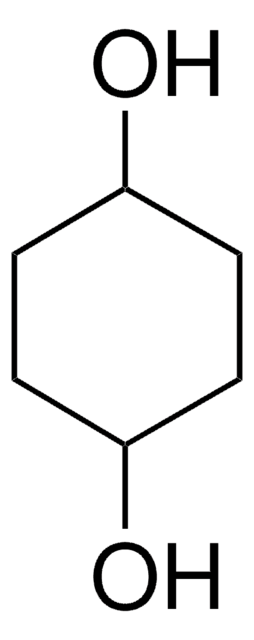

![4,8-Bis(hydroxymethyl)tricyclo[5.2.1.02,6]decane, mixture of isomers 96%](/deepweb/assets/sigmaaldrich/product/structures/973/006/555dc1f2-c191-4d54-9aea-19fd4c3544a2/640/555dc1f2-c191-4d54-9aea-19fd4c3544a2.png)
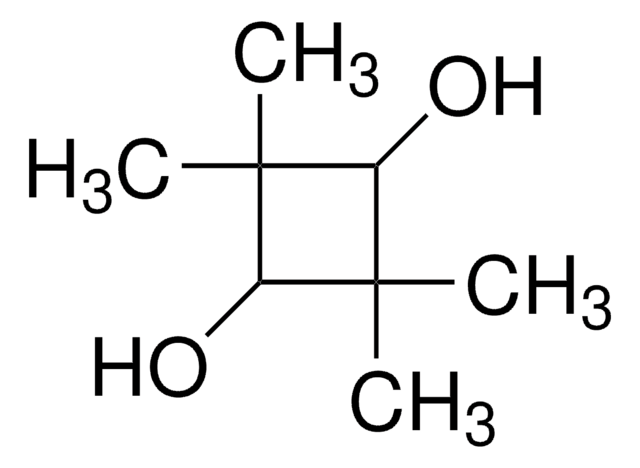
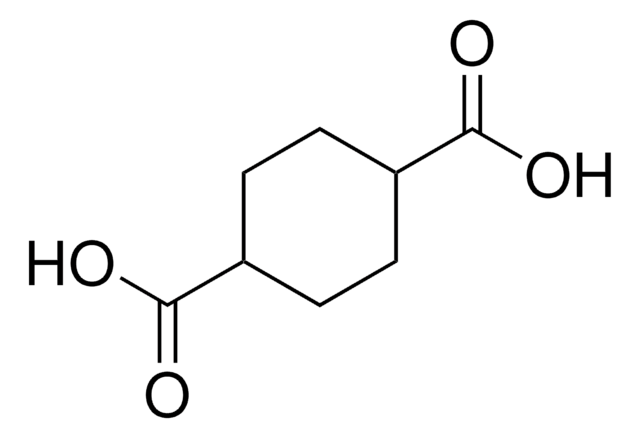
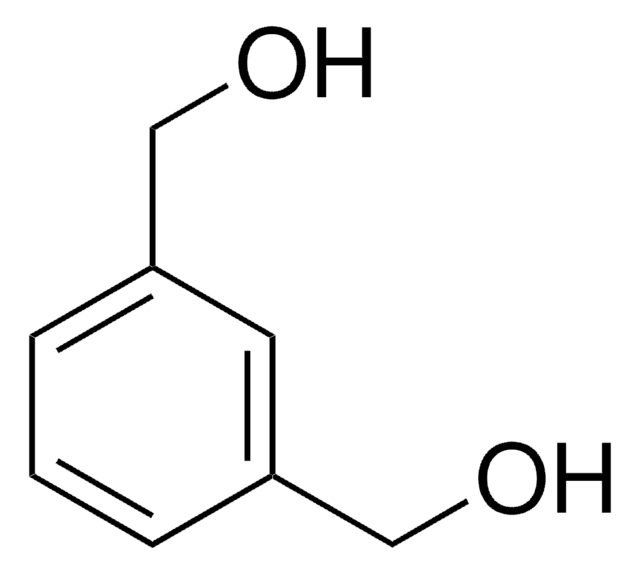
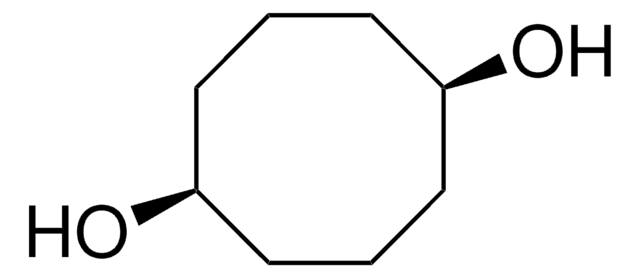
![Tricyclo[5.2.1.02,6]decanedimethanol diacrylate](/deepweb/assets/sigmaaldrich/product/structures/327/536/0dc81542-b920-47ec-99c1-d064a327a315/640/0dc81542-b920-47ec-99c1-d064a327a315.png)
